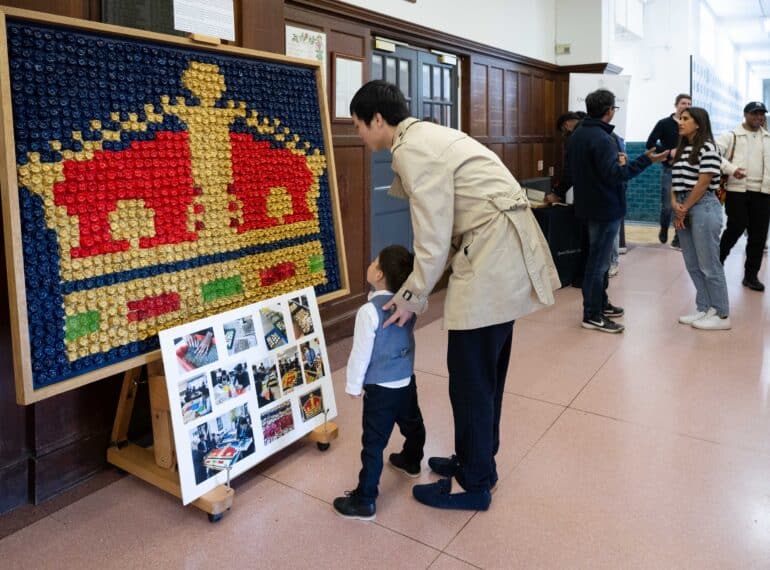
After its successful unveiling at last month’s Founder’s Day, plans are being drawn up to give a permanent home to a new artwork produced by every boy in the School.
The Tudor Rose Crown, a commemorative artwork produced to mark last year’s coronation of Charles III and Queen Camilla and as part of the School’s 450th anniversary celebrations, shows the crown as it appears on QE’s logo.
It comprises some 1,305 roses – one for each pupil – with every boy having made an impression into clay that was then cast into plaster.
The artwork is currently on display in the ‘Crush Hall’ – the area in the Main Building, close to the main entrance and Reception. It is hoped to relocate it to the Fern Building, near the Art Department, for the start of the 2024–2025 academic year, once tests to ensure the wall there can bear its weight have been completed.
Headmaster Neil Enright said: “This artwork is a striking visual commemoration of our 450th anniversary, made still more remarkable by the fact that every pupil had a hand in creating it. My congratulations go to the Art department on all their work in realising this vision.”
The crown from the logo is a representation of the crown on the original royal charter for the School, which was signed by Elizabeth I on 24th March 1573.
Art teacher Jeanne Nicodemus said: “Year 7 students painted the roses individually and meticulously.”
Year 12 boys then cast additional roses in red and green resin to represent the jewels in the crown.
The artwork is mounted on English oak, representing the strength and endurance of both the monarchy and the School.
The choice of wood also alludes to And Be It Known – the anthem commissioned for the School’s thanksgiving service in Westminster Abbey last year, in which international composer Howard Goodall compares QE to an oak, drawing its strength ‘from ancient roots spread deep and wide’.
One further allusion is to the 49 ceramic poppies mounted high in the School’s entrance hall. These were taken from the 2014 art installation at the Tower of London commemorating the centenary of the start of the First World War.
The poppies were bought for QE by the Trustees to the Foundation of the Schools of Queen Elizabeth using funds from a bequest from the late Dennis Nelms (OE 1934–1941) and his wife, Muriel. The number represents one flower for every OE who died in 1914–18, together with one in memory of Mr Nelm’s brother, Gordon (OE 1927-1932), who died in the Second World War.
- The making of the Tudor Rose Crown: click on the thumbnails below to view the images.

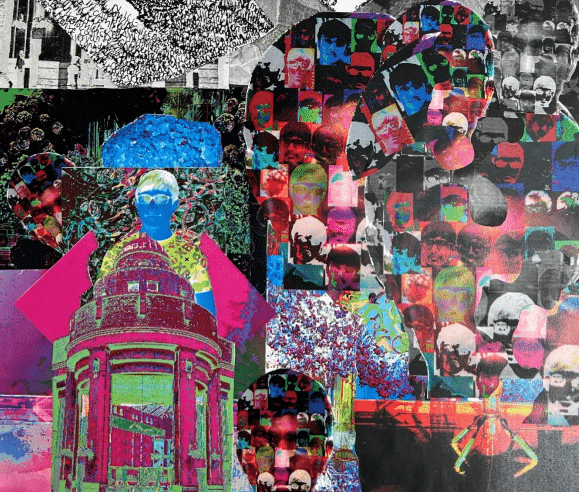
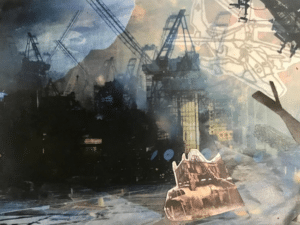 The 44-page publication features 26 pieces of poetry, prose, and art, many of them inspired by its anniversary-related theme, How did we get here? The approach, looking both backward and forward, mirrors that of the School’s anniversary celebrations on Founder’s Day which included a display of the School’s 1573 Royal Charter alongside the burying of a time capsule intended for the pupils of 2073, when QE will mark its 500th anniversary. Work on the magazine began last academic year, but it has only now been published.
The 44-page publication features 26 pieces of poetry, prose, and art, many of them inspired by its anniversary-related theme, How did we get here? The approach, looking both backward and forward, mirrors that of the School’s anniversary celebrations on Founder’s Day which included a display of the School’s 1573 Royal Charter alongside the burying of a time capsule intended for the pupils of 2073, when QE will mark its 500th anniversary. Work on the magazine began last academic year, but it has only now been published.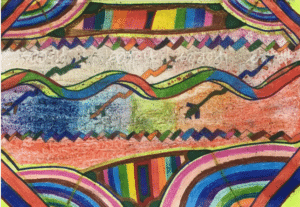 The poetry section is highly varied, with contributions ranging from Year 9 boy Yingqiao Zhao’s piece about the moon – which is in the shape of a crescent and has key words picked out in different colours – to the nine-stanza rhyming French poem, La Mort de L’Ancien, composed by Year 13’s Aayush Backory. The poetry section closes with Nikhil Francine, of Year 9, addressing the anniversary directly with a poem entitled Thriving from Ancient Roots – the School’s slogan for the anniversary year.
The poetry section is highly varied, with contributions ranging from Year 9 boy Yingqiao Zhao’s piece about the moon – which is in the shape of a crescent and has key words picked out in different colours – to the nine-stanza rhyming French poem, La Mort de L’Ancien, composed by Year 13’s Aayush Backory. The poetry section closes with Nikhil Francine, of Year 9, addressing the anniversary directly with a poem entitled Thriving from Ancient Roots – the School’s slogan for the anniversary year. Interspersed throughout The Arabella are artworks exploring themes including Expressive Heads, Distortion and Identity; Dystopian Landscape; and Art Inspired by Music. Shown in this news story, from top to bottom, are:
Interspersed throughout The Arabella are artworks exploring themes including Expressive Heads, Distortion and Identity; Dystopian Landscape; and Art Inspired by Music. Shown in this news story, from top to bottom, are: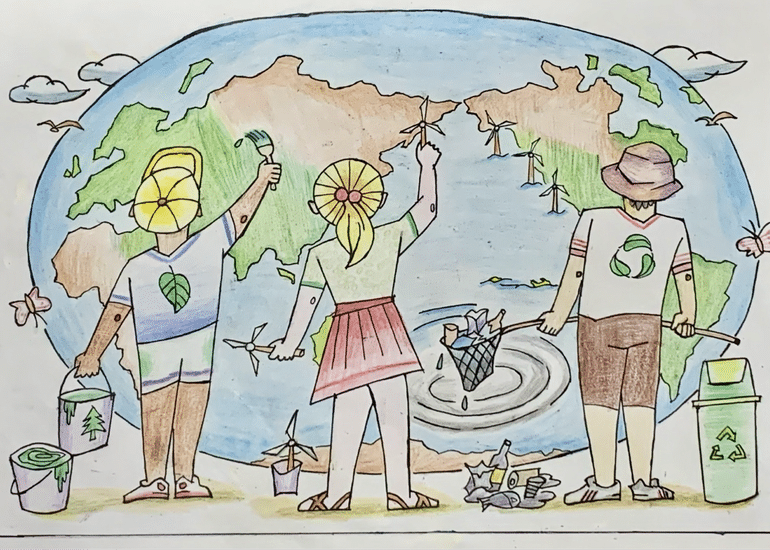
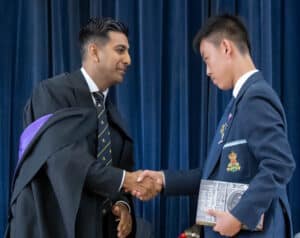 His colourful depiction of young people taking action to create a greener planet – entitled Friends of the Earth – took third place in the Climate Art Prize contest organised by Imperial College London’s Grantham Institute.
His colourful depiction of young people taking action to create a greener planet – entitled Friends of the Earth – took third place in the Climate Art Prize contest organised by Imperial College London’s Grantham Institute.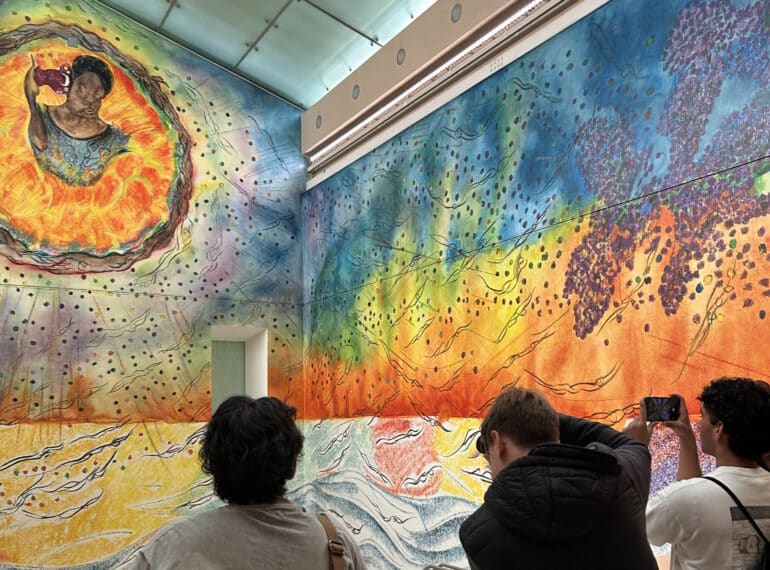
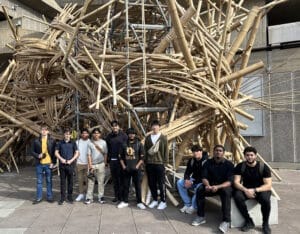 Head of Art Craig Wheatley said the boys had been moved by what they saw there: “The scale and beauty of such a poetic piece that highlights the tragedy was very poignant and a reminder of the impact art can have on the viewer.
Head of Art Craig Wheatley said the boys had been moved by what they saw there: “The scale and beauty of such a poetic piece that highlights the tragedy was very poignant and a reminder of the impact art can have on the viewer.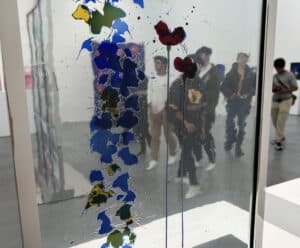 Moving on from the Tate, the group walked to Newport Street Gallery and enjoyed the glass work of British artist Brian Clarke.
Moving on from the Tate, the group walked to Newport Street Gallery and enjoyed the glass work of British artist Brian Clarke.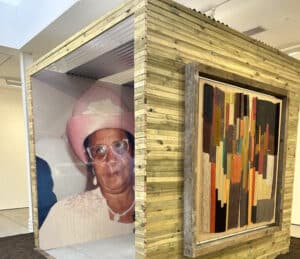 The exhibition explored themes of conflict, displacement and the asymmetry of power. Mr Wheatley said: “The large abstract pieces challenged the boys’ understanding of artwork that makes numerous social and political references without the use of a literal visual narrative.”
The exhibition explored themes of conflict, displacement and the asymmetry of power. Mr Wheatley said: “The large abstract pieces challenged the boys’ understanding of artwork that makes numerous social and political references without the use of a literal visual narrative.”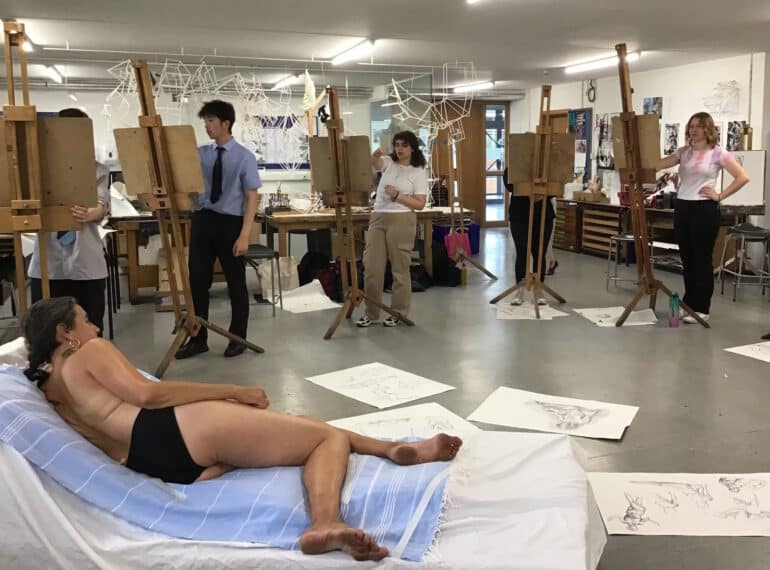
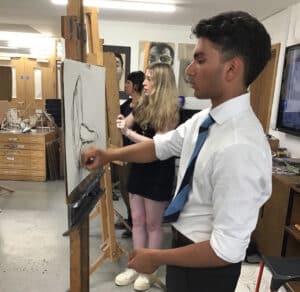 Together with the girls’ participation in filming a promotional video and in a Sketch-off event held as part of QE’s Design Festival earlier in the Summer Term, the life-drawing sessions mark an expansion of the work of the QE Together partnership, which had previously focused on community activities.
Together with the girls’ participation in filming a promotional video and in a Sketch-off event held as part of QE’s Design Festival earlier in the Summer Term, the life-drawing sessions mark an expansion of the work of the QE Together partnership, which had previously focused on community activities.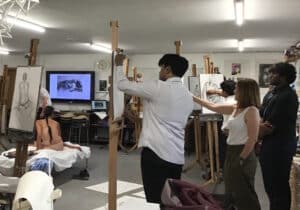 Led by pupils from the two schools, QE Together continued its community activities, with musicians coming together for another concert for care home residents.
Led by pupils from the two schools, QE Together continued its community activities, with musicians coming together for another concert for care home residents.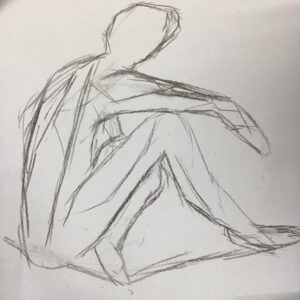 QE Together is one of the newest of QE’s partnerships. The School also has firmly established academic partnerships with North London Collegiate School and The Henrietta Barnett School.
QE Together is one of the newest of QE’s partnerships. The School also has firmly established academic partnerships with North London Collegiate School and The Henrietta Barnett School.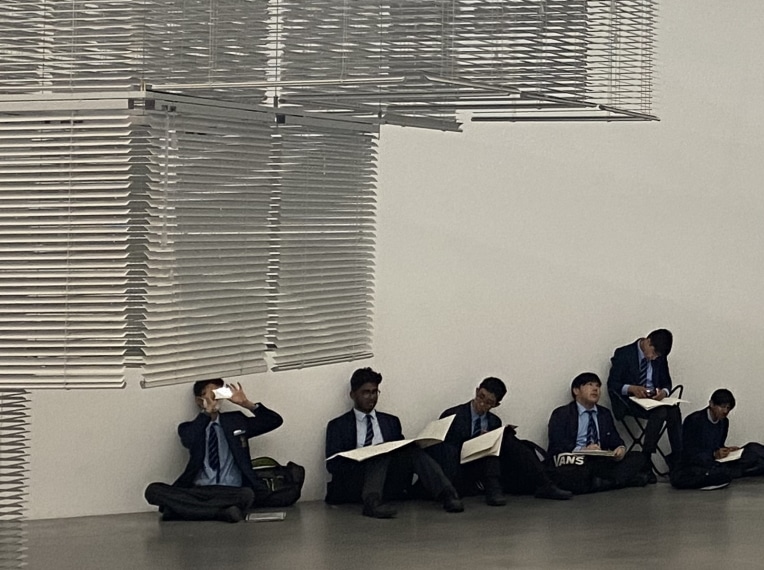
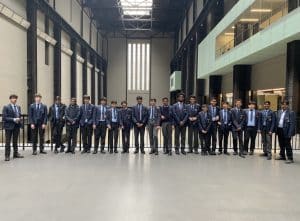 The boys, who have spent the term using her Bad Copies series as a starting point to develop their painting and drawing skills, headed straight to the rooms in Tate Modern’s Materials and Objects collection dedicated to her work.
The boys, who have spent the term using her Bad Copies series as a starting point to develop their painting and drawing skills, headed straight to the rooms in Tate Modern’s Materials and Objects collection dedicated to her work.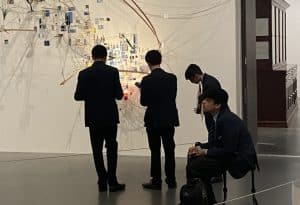 During the visit, the boys took time to analyse and record their observations in the form of written annotation and observational drawing. Guided by teaching staff, they were challenged to contemplate the meaning of the works on display and the artist’s intention, giving both objective analysis and subjective opinion.
During the visit, the boys took time to analyse and record their observations in the form of written annotation and observational drawing. Guided by teaching staff, they were challenged to contemplate the meaning of the works on display and the artist’s intention, giving both objective analysis and subjective opinion. “Furthermore, the visit developed their ability in out-of-classroom research and in generating independent ideas. Those are transferrable skills that the boys will be able to apply across their current and future curriculum.”
“Furthermore, the visit developed their ability in out-of-classroom research and in generating independent ideas. Those are transferrable skills that the boys will be able to apply across their current and future curriculum.”